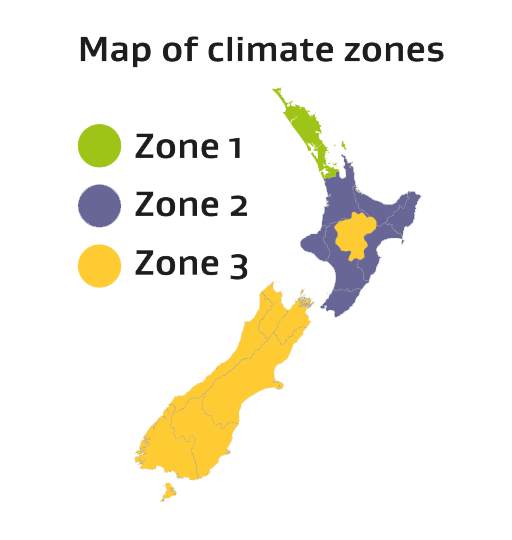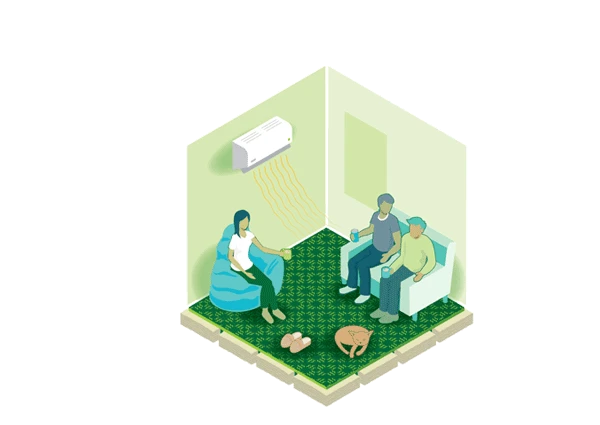Since 1 July 2019, ceiling and underfloor insulation has been compulsory in all rental homes, where it is reasonably practicable to install.
These requirements apply to all rental properties covered by the Residential Tenancies Act 1986 (RTA), including houses rented by Kāinga Ora (formerly Housing New Zealand) and registered Community Housing Providers.
Insulation must meet the correct standards and be installed safely. Wall insulation is not under the RTA.
Landlords who do not have the correct insulation installed – and don’t meet the criteria for an exception – are in breach of the Residential Tenancies Act. They may be liable for damages of up to $7,200.
Find out if your rental property meets exception criteria
If tenants think their rental property does not meet the insulation requirements, they should talk to their landlord first. If they can’t resolve the issue themselves, there are several options available, including mediation.
Visit the page below to find out what to do next.
Breaches of the Residential Tenancies Act
This page covers the insulation requirements under the RTA.
Note: The healthy homes standards include new requirements for insulation, which will take effect between 1 July 2021 and 1 July 2025, depending on the type of rental property. Some insulation will need to be upgraded or replaced to meet the new healthy homes insulation standard.
How to meet the insulation requirements
Insulation is measured in terms of its ‘R-value’. This is a measure of resistance to heat flow. The higher the R-value, the better the insulation.
For more detail about the insulation requirements under the RTA, download the insulation requirements document.
Insulation requirements [PDF, 1.9 MB]
If insulation was installed before July 2016
Insulation that was installed before July 2016 will meet the requirements if:
- it is in reasonable condition (for example, no mould, dampness or gaps), and
- it was at least the minimum R-value when it was installed.
For timber-framed homes, the minimum R-values :
- Ceiling R 1.9
- Underfloor R 0.9
For masonry homes, the minimum R-values are:
- Ceiling R 1.5
- Underfloor R 0.9
Important:
These minimum R-values only apply until the healthy homes compliance date. After that, all insulation in rental homes must meet the new standard.
Healthy homes compliance dates
If any part of the existing insulation is not in reasonable condition, then the landlord must replace it with insulation that meets the new standard, as below.
If insulation was installed after 1 July 2016
New insulation in rental properties needs to meet minimum R-values. The minimum R-value depends on which part of the country the property is in:

Minimum R-values for Zones 1 and 2:
- Ceiling R 2.9
- Underfloor R 1.3
Minimum R-values for Zone 3:
- Ceiling R 3.3
- Underfloor R 1.3
If there’s more than one layer of insulation, their product R-values may be combined. All insulation must be in reasonable condition.
Insulation that doesn’t meet the regulations must be topped up or replaced. A professional insulation installer can advise you on the best way to meet the requirements.
Landlords must make all reasonable efforts to find out what insulation is in their rental property. Landlords can assess their insulation by:
- physically looking in the ceiling cavity and underfloor area
- hiring a professional to do an assessment
- checking the council building file.
If you're not sure of the location, type and condition of the insulation, seek advice from a professional insulation installer. Ask for written information to support the insulation statement.
Find out more about assessing insulation in the document below.
Insulation requirements [PDF, 1.9 MB]
Checking and installing insulation safely
Meeting the New Zealand Standard
Insulation must be installed in accordance with New Zealand Standard NZS 4246:2016.
The standard explains the correct way to install insulation, so that it is effective and safe. It includes guidance on what safety clearances are required from downlights, chimney flues and roofing.
Last updated: 25 November 2022



